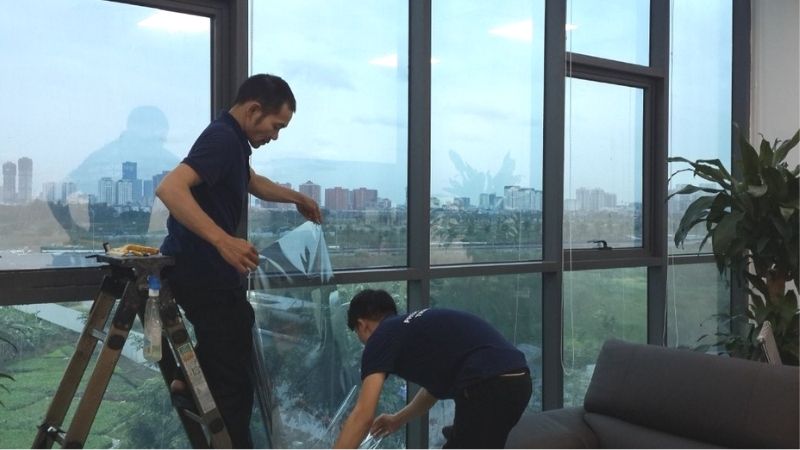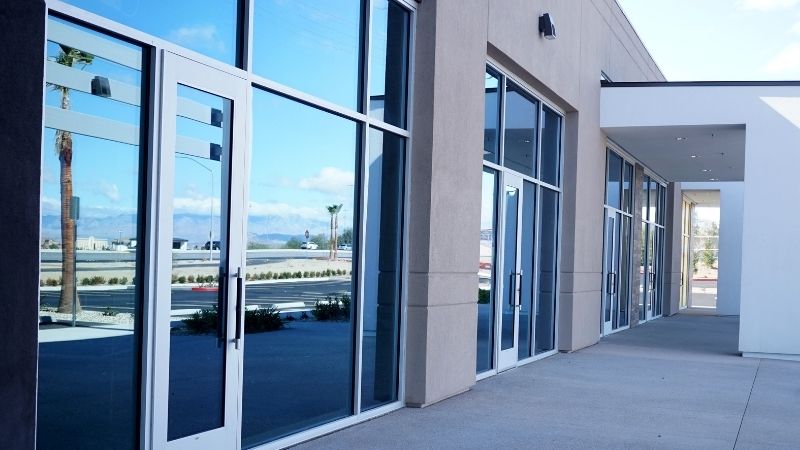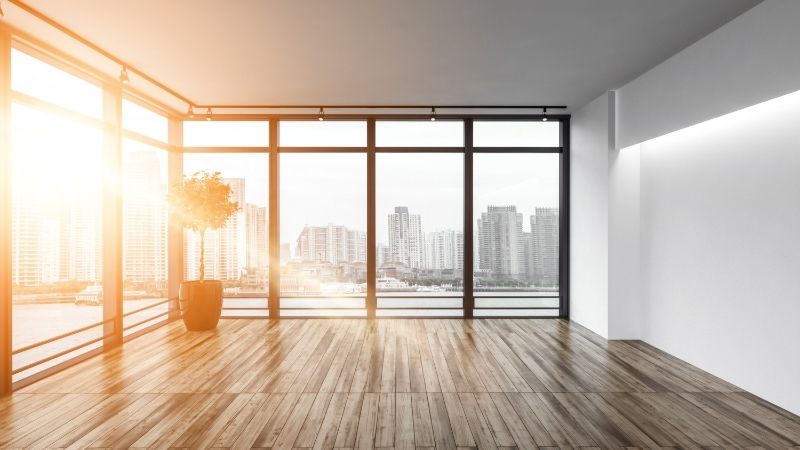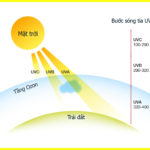During the summer, the sun’s rays can be intense and penetrate through glass, raising the temperature inside. As a result, the use of heat-resistant film to combat the heat is a familiar concept for high-rise buildings, shopping malls, and offices. Learn more about heat-resistant films in the article below.
1 What is Heat-Resistant Film?
What is Heat-Resistant Film?
Heat-resistant film is a thin polyester film coated with various materials such as ceramic, metal, carbon, etc. It works by absorbing or reflecting the sun’s heat through nano, hybrid, and metal sputtering technologies.
The heat-resistant film has a very thin and transparent adhesive layer that allows users to easily attach it to the inside of glass windows in buildings, offices, or car windows to reduce heat and block UV rays.
 Heat-resistant film is a thin, multi-layered polyester film
Heat-resistant film is a thin, multi-layered polyester film
Principle of Heat-Resistant Film
All types of heat-resistant films work based on some basic heat-blocking mechanisms:
- Absorption mechanism
- Radiation mechanism
- Reflection mechanism
 Principle of Heat-Resistant Film
Principle of Heat-Resistant Film
The difference between heat-resistant films lies in the technology used, which determines how they block heat and UV rays. Basically, heat-resistant films can be categorized into the following types:
Energy-Absorbing Film: This film uses Dyed technology (dye-based) and appears black due to carbon. It absorbs heat onto the glass, warming it, and has an additional low-emission layer to prevent heat from entering and escaping.
Energy-Reflective Film: This film has a molecular-level metal coating that reflects the sun’s heat without absorbing it into the glass like other types of films. All UV rays, infrared rays, and light are reflected back into the environment.
Spectrally Selective Film: This film both absorbs and reflects solar energy. It uses coatings made of compounds or materials that can selectively block the solar spectrum, ensuring the blockage of 100% UV rays and over 90% of infrared rays.
 Types of Heat-Resistant Films
Types of Heat-Resistant Films
Cost of Heat-Resistant Film
You can purchase heat-resistant films at car accessory shops, interior decoration stores, or online on e-commerce platforms like Shopee, Lazada, and Tiki. The price ranges from 200,000 to 600,000 VND per square meter, depending on the type of film.
 Cost of Heat-Resistant Film
Cost of Heat-Resistant Film
2 Does Applying Heat-Resistant Film on Glass Effectively Reduce Heat?
Applying heat-resistant film on glass can reduce 30-90% of heat, UV rays, and infrared rays entering your home, creating a cool and comfortable indoor environment and protecting your family’s health, skin, and eyes.
Additionally, heat-resistant film can reduce glare and block some direct sunlight, providing a soothing effect for your eyes.
At the same time, your indoor furnishings are better protected, reducing wear and increasing their lifespan.
Most importantly, heat-resistant film helps you save energy by reflecting heat from the outside and retaining cool air inside, resulting in reduced fuel consumption when using air conditioning.
 Does Applying Heat-Resistant Film on Glass Effectively Reduce Heat?
Does Applying Heat-Resistant Film on Glass Effectively Reduce Heat?
This article has provided information about heat-resistant films for glass. We hope you found it helpful. Don’t forget to follow our other articles for more interesting content.







































